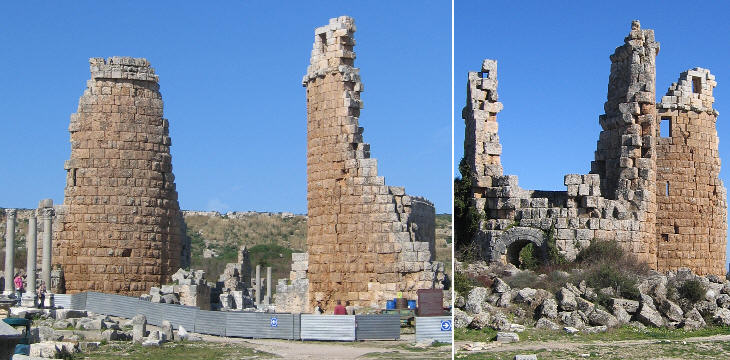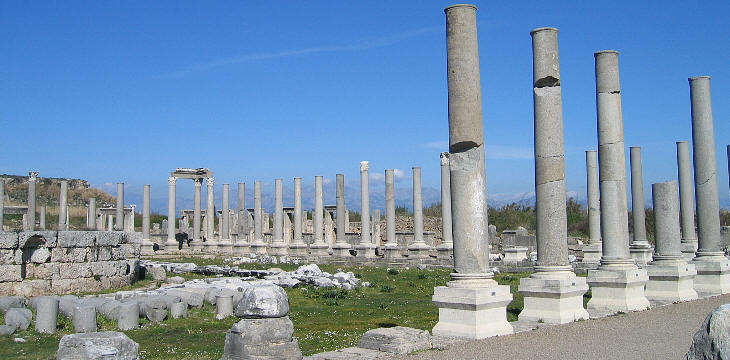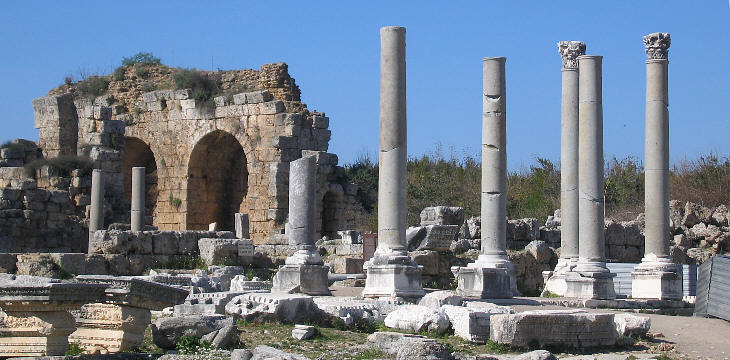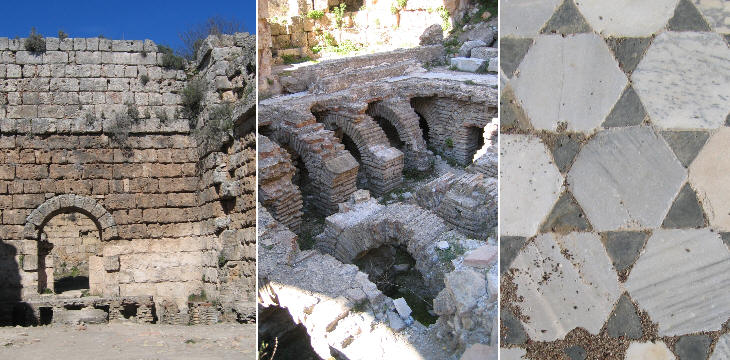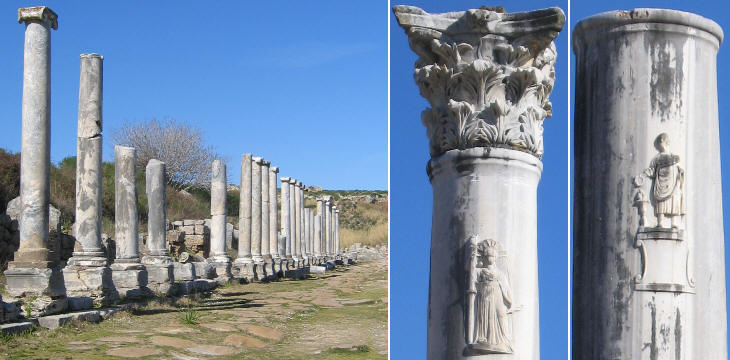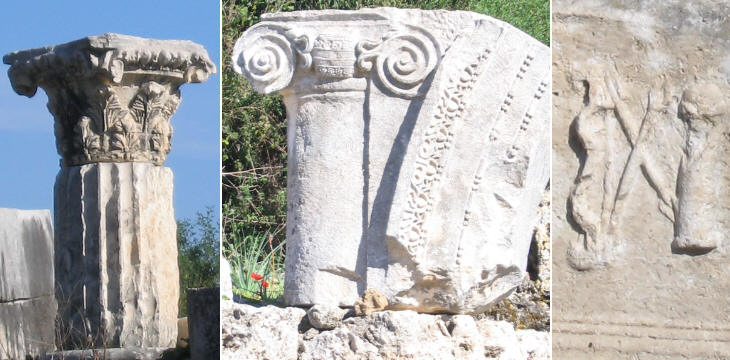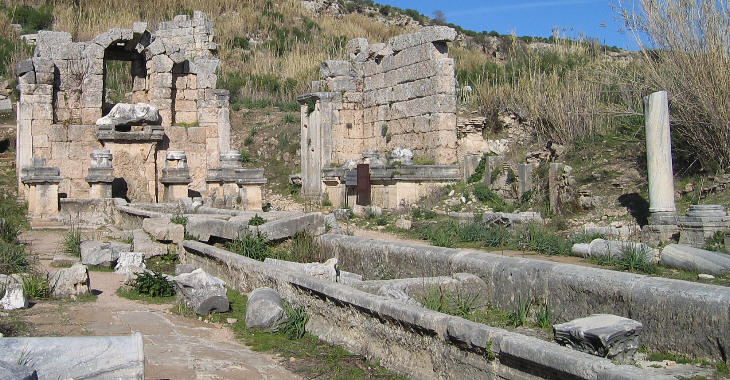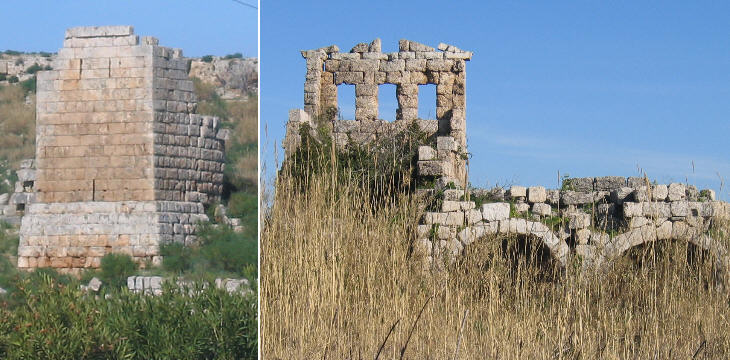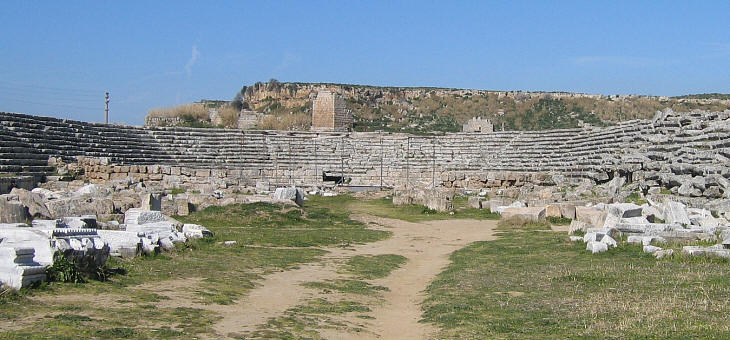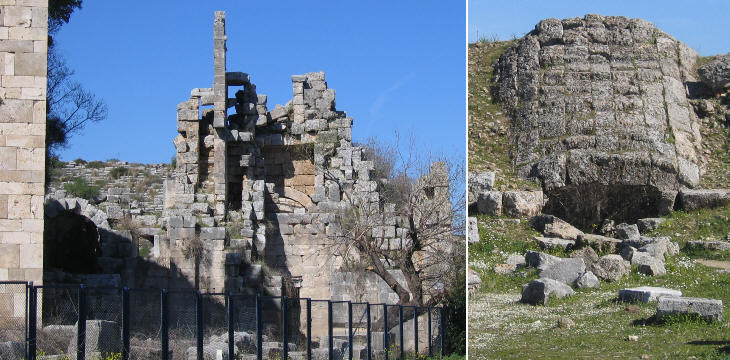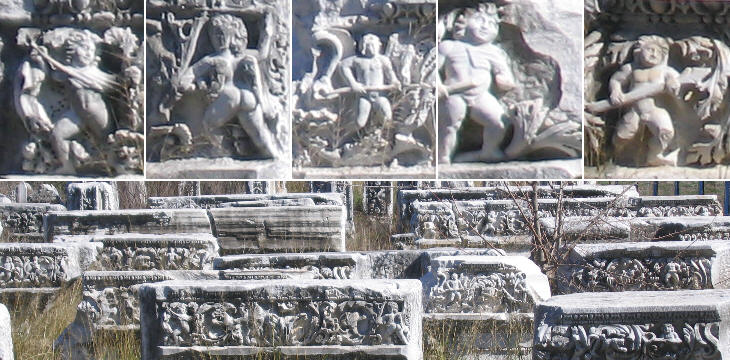  What's New! Detailed Sitemap All images © by Roberto Piperno, owner of the domain. Write to romapip@quipo.it. Text edited by Rosamie Moore. Page added in June 2008. |
 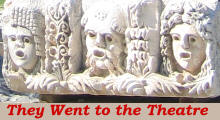 - Perge - Perge(theatrical masks at Myra) I pitched my tent amidst the ruins of Perge; near me was a small encampment of shepherds, who had brought their cattle to pasture amidst the ruins. The first object that strikes the traveller on arriving here is the extreme beauty of the situation of the ancient town, lying between and upon the sides of two hills, with an extensive valley in front, watered by the river Cestrus and backed by the mountains of the Taurus. Charles Fellows - Journal Written during an Excursion in Asia Minor in 1838
The ancient town of Perge was located on the right bank of the River Kestros (today known as Aksu) a few miles from its mouth. Small ships could reach the town directly from the sea. The first settlement was founded on a hill, but the town expanded into the plain where its main monuments were built. The main gate of Perge was protected by two round towers; they were built before the town became a Roman possession (188 BC). Later on with the expansion of Perge the towers lost their defensive purpose, but due to the elegance of their design they were retained and turned into a triumphal entrance to a long colonnaded street which crossed the town.
A large agorÓ (market place/forum) lay to the east of the gate. It had an almost square shape with a tholos (round building) at its centre. Similar to other Roman agorÓ (see that of Smyrna), grey granite and white marble were used for building the porticoes which were flanked by shops.
The main baths are located to the west of the gate; they are among the largest and finest ones which can be seen in Turkey. In addition to the traditional three halls (frigidarium - cold, tepidarium - mildly warm, calidarium - hot), they had several open courtyards surrounded by porticoes. The halls and the courtyards were decorated with many statues. These were unearthed in the 1980s and have been relocated to the Archaeological Museum of Antalya. Several of them show mutilation of the genitals, a likely action of the early Christians.
The calidarium retains evidence of the low pool (piscina) used as bathing place and, due to the partial collapse of the pavement, it is possible to see its heating system. This was called hypocaust (heat from below) and it consisted in raising the floor of the hall so that hot air would pass through this low chamber, thus heating the room. The hot air came from a nearby furnace. In the case of Perge the floor was raised by building small arches, while in general the Romans used piles of low bricks. This change to the usual construction technique was most likely aimed at ensuring a greater stability of the building in case of earthquake.
The main street of Perge can be compared with Via Arcadiana at Ephesus for the impressive number of its columns. Some of them were decorated with small reliefs, something which is very unusual. One of the reliefs shows Artemis holding a gigantic torch in addition to bow and arrows; Perge had a major temple dedicated to this goddess, but its precise location is still to be found. In another relief a person dressed with the Roman toga pours wine on an altar.
The list of Bishops of Perge reaches the XIIIth century and it is believed the town was finally abandoned during that period when the region saw continuous fighting between the Crusaders and various local emirates; it is somewhat surprising that excavations have not brought to light any major temple or church.
The main street reached the foot of the acropolis and ended with a monumental fountain. The Romans built an aqueduct which supplied the fountain with fresh water; this flowed, through an opening below a statue portraying the River Kestros, into a basin and from there into a canal which divided the colonnaded street. It is known that the Romans enjoyed listening to the murmur of water; the nymphaeum and the canal must have produced a very refreshing sound (and sight) for the inhabitants of Perge during the very hot summers of Pamphylia.
The defence of the lower town required the construction of massive walls which were strengthened by towers some of which had a tympanum shape.
Near the theatre is a stadium, or course for races, which is quite perfect, with seats along each side and also forming a circular end. This building is now used as an inclosure for nursing camels. C. Fellows The walls were built when the town was already in a period of decadence and both theatre and stadium were left outside them. Perge had a stadium which could accommodate an audience of 12,000. It was entirely built in the plain. The seats were supported by vaulted structures, which in some cases housed shops selling goods or providing food and beverages.
A theatre stood opposite to the stadium: its lower thirteen rows of seats were excavated into the rock of a hill, but during the Roman rule twenty five rows were added which were supported by vaulted structures similar to those of the stadium.
In February 2008 most of the reliefs which decorated stadium and theatre were lined up in an open space; most of them portrayed Cupids in various ways. Introductory page Priene Miletus Didyma Iasos Euromos Milas Kaunos Telmessos Tlos Xanthos Letoon Patara Antiphellos Simena Myra Phaselis Termessos Side Aspendos Antalya Map of Turkey with all the locations covered in this website  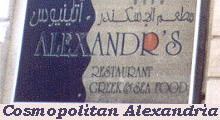 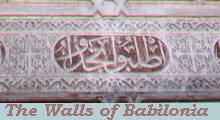 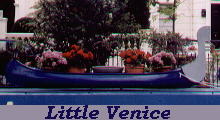 |
